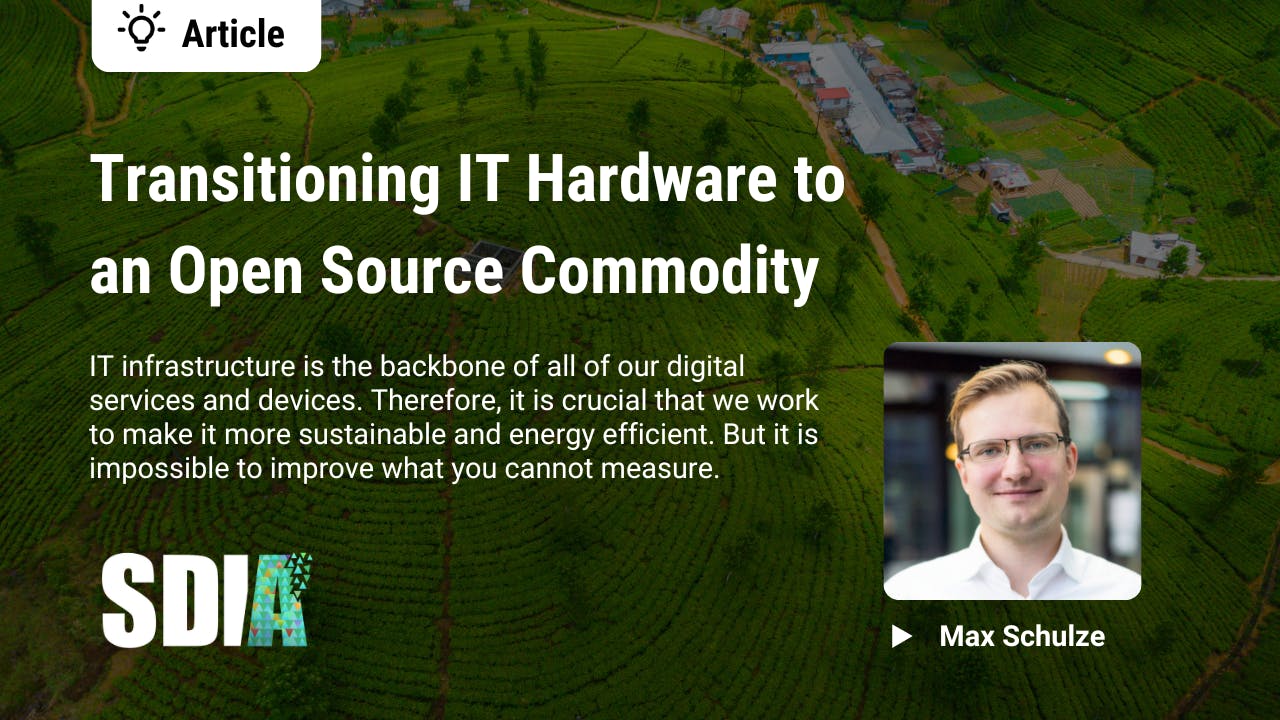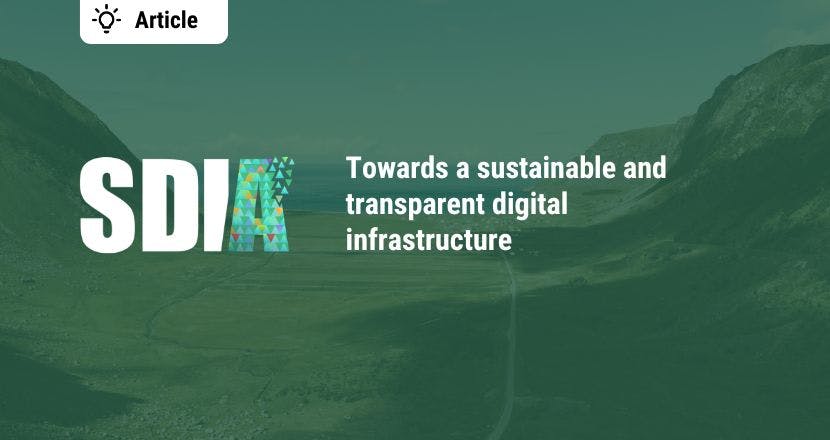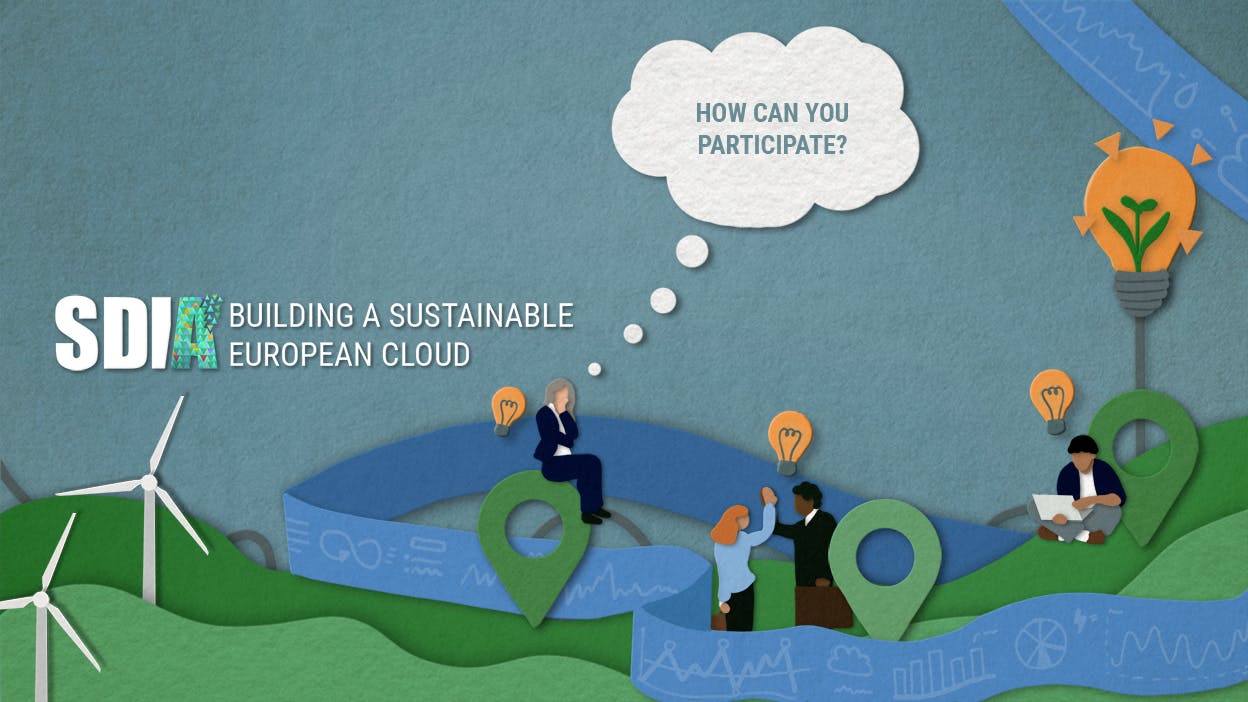IT infrastructure is the backbone of all of our digital services and devices. Therefore, it is crucial that we work to make it sustainable.
The SDIA Roadmap to achieving a sustainable digital infrastructure by 2030 consists of cross-industry collaboration that facilitates a growing economy while protecting the planet by being more efficient with both our resources and energy consumption. While the internet, devices, and applications have made our lives much easier in many ways, this also comes with increased electricity consumption.
Circular thinking and action
The amount of electricity consumed by data centers is an estimated 200 terawatt-hours (TWh) each year and growing, which is more than the national energy consumption of some countries. Therefore, the tech industry needs to implement solutions that will allow us to support increased data demands within a sustainable digital economy while reducing our digital carbon footprint.
Apart from electricity consumption, the second big obstacle in creating sustainable digital infrastructure is that most of these machines also need to turn electricity into computation and memory ― becoming a problem in that the process itself leaves an environmental and social footprint that needs to be addressed.
SDIA’s Steering Group: Strategies for refurbishment, recycling and reuse of server hardware is already researching the topic of how to advance a circular school of thought for the manufacturing of IT equipment enabling companies to continue innovating and making new products and services with less resource extraction, pollution, and electronic waste.
It is impossible to improve what you cannot measure
Hardware, just like software, needs to be aware of its own footprint. In the case of software, this requires data from all aspects of the supply chain ― from cloud providers and data center owners and operators, to hardware manufacturers. In turn, this enables software developers to make better decisions and to be aware of the footprint that it produces.
The same can be argued when talking about hardware. Both software and hardware have a role in making data centers more sustainable. We cannot separate one from the other, especially with respect to efficiency. Hence, both must be actively considered when working to improve energy consumption and efficiency overall.
In the past, the hardware was a closed system. But now, we are in an era where it is possible for anyone to create their own hardware. The SDIA advocates commoditizing hardware as it would lead to an increase in competition, lower prices, and reduced environmental impact.
Energy efficient hardware is also a basic necessity for making computation more efficient. Using refurbished and recycled hardware has to become more widespread, as with extending the lifecycle of the hardware and its components as long as possible, facilitated through an open, comparative database of hardware lifecycle assessments (LCAs). A transparent and collaborative LCA database would be a best practice benchmark, particularly with respect to the release of aerosols.
Resource depletion and outdated ecosystems
The sourcing of data center hardware should also be environmentally and socially responsible, and resource consumption should be minimized as much as possible.
For example, rare minerals are a key component of our technology. They are mined, processed, and used in the manufacturing of smartphones, computers, and other electronics. These minerals are also used in the production of solar panels, electric cars, wind turbines, and home appliances.
The problem is that these minerals are scarce and difficult to find. There is also a lack of recycling programs for electronic waste which means that most of it ends up in landfills or incinerators. This creates a vicious cycle: mining for new rare minerals leads to more electronic waste which leads to more mining for rare minerals.
Companies should be held to account, one such example is Apple’s outdated hardware ecosystem which could significantly benefit from the best practice examples that the Open Compute Project (OCP) can offer, and that can also be of great value for the process of commoditizing hardware.
As cited in a Lifewire article by Mayank Sharma, while it is certainly encouraging that there is progress on being able to repair Apple devices outside its own ecosystem and by authorized third parties, at the same time this also devalues and cuts out third-party suppliers and partners, doing almost nothing to open up the market for those suppliers.
Advocating for open source, commoditized hardware
In that sense, commoditizing hardware and making it open source, per the Open Compute Project mechanisms, will enable anyone to manufacture and make improvements.
In the case of Apple’s hardware ecosystem, those hardware components which are not unique, such as camera arrays, storage and memory components, batteries, or communication modems, should be based on an open design that anyone could replicate.
The concept behind an open design is simple: you are free to make copies or modifications to a product without having to negotiate with the original designer.
The SDIA strongly advocates for finally commoditizing hardware and making it open source. Open design has many benefits, such as being able to modify products, as well as sharing knowledge about how a product works with others.
Since computation performance has plateaued and phones are out of additional features to add from a hardware perspective, now is the right time to accept that hardware is not a differentiator but rather a commodity. It can be viewed simply as an enabler that devices and machines use to provide their services and products.

.jpg?ixlib=gatsbyFP&auto=compress%2Cformat&fit=max&rect=0%2C44%2C600%2C800&w=600&h=800)



